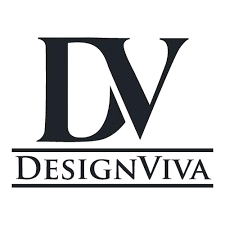WordPress functions as a full-scale content management system that supports custom workflows, integrations, and enterprise-level security. Businesses rely on it to establish branded websites that extend beyond aesthetics, integrating usability, compliance, and performance into the design process.
A custom approach begins with aligning site architecture and visual identity to specific business objectives, translating requirements into layouts, interactions, and features that directly influence how users engage with the website. This makes design an operational tool for conversion, credibility, and long-term scalability rather than a superficial layer applied at the end of development.
Foundation of Effective Custom Design
Custom design in WordPress begins with clarifying what “custom” truly implies. It is the creation of a structure and interface built from brand research, user needs, and defined goals rather than superficial adjustments to existing templates.
A proper process starts with discovery: gathering information about how the brand communicates, the behaviors and expectations of the target audience, and the business functions the website must support.
Design decisions directly influence measurable outcomes. Clear hierarchy in page layouts shortens the path to key actions. Form placement and button design affect conversion rates.
Readability of typography improves session duration, while consistency in spacing and alignment shapes perceived credibility. A site that visually reflects its brand identity while guiding visitors through logical paths supports both usability and trust.
Custom design also anticipates functional requirements for an enterprise, which might include role-based access to dashboards, integration with ERP or CRM systems, or unique workflows for content publishing.
For a smaller business, it could mean straightforward booking systems or product catalogs designed for clarity. In each case, the design is not isolated decoration; it is the foundation for how users interact with the site and how the business achieves its digital objectives.
User Experience and Functionality
Custom design in WordPress begins with clarifying what “custom” truly implies. It is the creation of a structure and interface built from brand research, user needs, and defined goals rather than superficial adjustments to existing templates. A proper process starts with discovery: gathering information about how the brand communicates, the behaviors and expectations of the target audience, and the business functions the website must support.
Design decisions directly influence measurable outcomes. Clear hierarchy in page layouts shortens the path to key actions. Form placement and button design affect conversion rates.
Readability of typography improves session duration, while consistency in spacing and alignment shapes perceived credibility. A site that visually reflects its brand identity while guiding visitors through logical paths supports both usability and trust.
Custom design also anticipates functional requirements for an enterprise, which might include role-based access to dashboards, integration with ERP or CRM systems, or unique workflows for content publishing.
For a smaller business, it could mean straightforward booking systems or product catalogs designed for clarity. In each case, the design is not isolated decoration; it is the foundation for how users interact with the site and how the business achieves its digital objectives.
Visual Identity and Brand Consistency
 Visual identity within a WordPress website is established through a consistent system of typography, color, and imagery that reflects the brand across all digital interactions.
Visual identity within a WordPress website is established through a consistent system of typography, color, and imagery that reflects the brand across all digital interactions.
Typefaces selected for headers and body text guide readability while reinforcing brand character. Color palettes extend beyond aesthetics, contrasts, accent tones, and gradients determine both clarity and hierarchy, signaling which elements carry priority.
Imagery adds context when aligned with the brand’s narrative. Original photography or carefully curated visuals connect with the intended audience better than generic stock. Subtle enhancements such as hover states, animated icons, or transition effects bring attention to interactions without overwhelming the main content.
Consistency across these elements strengthens recognition. When page layouts, buttons, and content modules share uniform spacing, tone, and style, the experience builds a reliable impression. Visitors recognize the website as part of a coherent brand system, whether they are reading a blog post, completing a form, or exploring a service page.
When it comes to building on WordPress, cookie-cutter themes and bloated templates just don’t cut it. If you want a site that reflects your brand, converts users, and doesn’t fall apart on mobile, you need custom web design that’s actually built around performance, UX, and scalability.
WordPress-Specific Customization Opportunities
Themes and frameworks in WordPress form the structural layer of custom design. A child theme built on a lightweight parent offers precise control over templates, styles, and functions without burdening the site with unnecessary code.
Frameworks such as Genesis or custom-built starter themes provide clean foundations, reducing reliance on multipurpose packages that add unused scripts and slow performance.
Plugins extend functionality, but selection must be strategic. Every installed plugin introduces additional code and potential security exposure. Essential choices cover areas such as form handling, caching, SEO metadata, or role management. When requirements are unique, such as integration with proprietary systems or custom workflows, developing a dedicated plugin avoids the overhead of adapting generic solutions.
Scalability depends on structuring design elements to support growth. Gutenberg’s block editor allows modular content construction where blocks can be reused or expanded without reworking layouts.
For organizations managing multiple brands or regions, WordPress multisite consolidates administration while keeping each site distinct in content and branding. These approaches create a technical framework that adapts to future requirements without sacrificing efficiency or stability.
Collaboration and Process
Collaboration defines how a custom WordPress design project progresses from concept to reliable execution. Designers, developers, and stakeholders contribute expertise at different stages, aligning visual goals with technical feasibility and business objectives.
Early workshops and structured discovery sessions clarify requirements, which are then translated into wireframes and prototypes for review.
Prototyping cycles keep the process iterative. Each version undergoes feedback, with adjustments made before full development, reducing the risk of misalignment later. During this stage, accessibility checks, performance benchmarks, and security practices are integrated into the design rather than postponed as add-ons.
Maintenance is part of the design plan. A site built for an enterprise must remain adaptable as services, branding, or regulations shift. Update cycles for themes, plugins, and custom modules are documented, while monitoring tools track uptime and security status. When collaboration continues beyond launch, the website remains stable, scalable, and aligned with evolving business needs.







